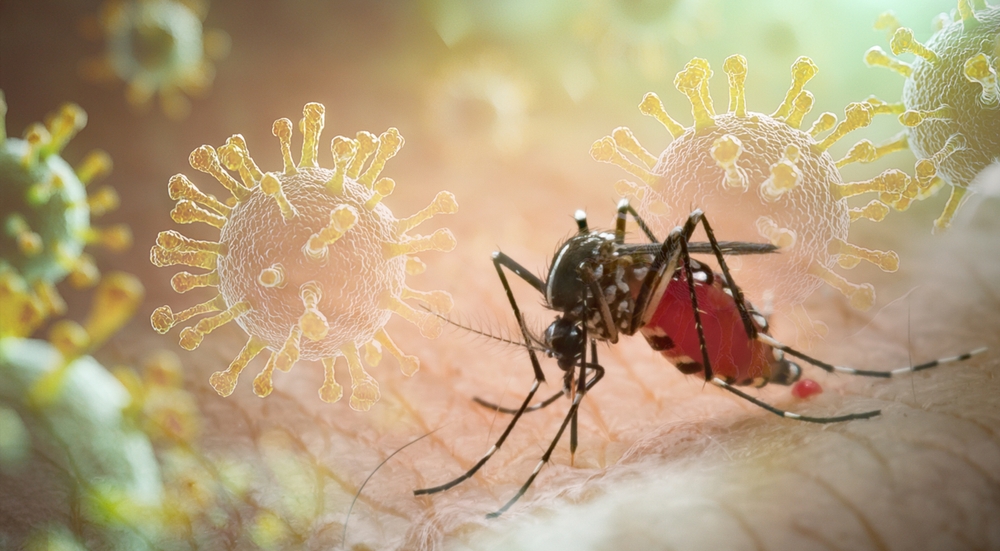China is carrying out its most challenging containment operation since COVID-19, using surveillance drones, mass insecticide spraying, and electricity shutoffs to contain a chikungunya virus outbreak that has now reached other countries. The mosquito-borne virus has spread from mainland China to Hong Kong, Macao, and even parts of Europe, despite China’s most intensive disease control measures since the COVID-19 lockdowns.
China Mobilizes Military Against Mosquitoes
Local mosquito control in Guangdong has expanded into a wide operation with civilian and military teams. Soldiers fog streets and parks in Foshan with insecticide while drones sweep neighborhoods for stagnant water.

Residents who fail to clear breeding sites face fines up to 10,000 yuan (about $1,400), or risk losing electricity. Officials in red vests go door to door, issuing fines or making arrests when they find standing water. Witnesses say people are sprayed with an insecticide mist before entry to some buildings.
In Foshan’s Guicheng district, some households have already lost power after refusing inspections. Officials warn that resistance could bring criminal charges for “obstructing the prevention of infectious diseases.” Health workers say patients are kept in the hospital for 1 week under mosquito netting, even though the virus does not spread between people.

The tactics mirror methods used during the pandemic, even though chikungunya does not pass between people and rarely kills. Government statements call the drive a “patriotic public health campaign” that favors rapid containment over individual liberties. Officials have also spoken of “zero chikungunya,” a goal similar to the earlier zero COVID strategy built on strict lockdowns and controls.
Outbreak Jumps Borders Despite Crackdown
Despite these intensive efforts, the virus has already crossed borders. More than 7,000 people have been infected in Guangdong. Making it the largest chikungunya outbreak since the virus first appeared in China in 2008. Cases linked to the outbreak have appeared in Hong Kong, which reported its first case on Saturday, August 3, 2025, and as far away as Hunan province, over 400 miles north of the epicenter.
While confirmed cases appear to be declining in Foshan over the past few days, with 95% of patients discharged within seven days, health officials worry about further spread. With hot and humid weather conditions across the region, and continued travel. Authorities fear the disease could reach additional provinces.
The virus has also appeared internationally. In Europe, France has reported 30 locally acquired cases this year, and Italy has reported one. The French overseas territory of Réunion, a French territory in the Indian Ocean, has seen over 54,000 cases and 12 deaths. The European Centre for Disease Prevention and Control warns this could mark the start of wider European transmission, given that every region in the world has now reported chikungunya cases in 2025.
From City Crisis to International Alerts
What began as a health emergency in Foshan, a city of 10 million people, has led to international travel warnings. The U.S. Centers for Disease Control and Prevention issued a Level 2 alert for Guangdong, advising visitors to take extra precautions against mosquito bites, and other countries have posted similar notices for regions facing chikungunya.
The situation has moved quickly from a local alert to global advisories. This is described as the first time China has faced international travel restrictions tied to a mosquito-borne disease. Reports from 2025 show chikungunya in every region of the world, and authorities are working to limit further spread.
For travelers, risk varies by destination. France has reported 30 locally acquired cases and Italy only 1, and health officials say these remain isolated. The presence of Aedes mosquitoes in parts of Europe means the virus could take hold if introduced during peak mosquito season.
Critics Question the Heavy-Handed Response
The response has split health experts. Dr. Marc Siegel, medical analyst, calls China’s approach “very restrictive and draconian” and doubts it will work. “People live too close together, and these mosquitoes breed easily,” he says.
Dr. Yanzhong Huang, a senior fellow for global health at the Council on Foreign Relations, calls the outbreak“exceptionally rare” and says China’s actions echo its zero-COVID methods on a more local scale. He points to a“patriotic public health” stance that puts rapid containment ahead of individual liberties.
China faces hurdles that may justify strong measures. Chikungunya virus outbreaks are rare in the country, so there is no population immunity. Two vaccines exist elsewhere, yet they are not available in China, which leaves prevention as the only tool. The stakes are higher than many assume, since up to 60% of patients develop joint pain that can last for months or years and weigh on families and health systems.
Drones, public spraying, and penalties tied to utilities suggest this could be China’s default for future outbreaks. Unlike COVID-19, chikungunya’s main threat is chronic pain rather than death. It is being met with pandemic-level intensity. Some experts warn that similar steps may follow for other mosquito-borne infections as climate change expands the areas where the insects can survive.
Balancing Public Health and Personal Freedom
The spread of chikungunya beyond China, despite the crackdown, shows the limits of authoritarian disease control. Compared with other outbreaks, China’s remains relatively small. La Réunion in the Indian Ocean has reported nearly 54,000 cases and 12 deaths so far this year. Yet China’s response has been far more intensive than efforts elsewhere.
The outbreak raises hard questions about how to balance public health and individual freedoms in a world where viruses can move quickly across borders. This is the first time chikungunya has taken hold in mainland China. So most residents had no prior immunity. That gap has helped the virus move fast.
As the world watches China’s zero chikungunya push, the debate continues over whether such measures are necessary and what they mean for travel, trade, and human rights as mosquito-borne threats expand.
Read More: Chikungunya Virus Spreads in China Amid Government’s Strong Response

